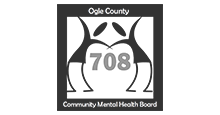Serenity Hospice & Home has been providing care since 1984. We serve the counties of Boone, Carroll, DeKalb, Lee, Ogle, Stephenson, Whiteside, Winnebago, and the towns of Walnut and Ohio in Bureau County.
Who makes referrals?
Anyone can make a referral. Physicians and Social Workers refer a large percentage of patients to hospice. Relatives and friends may refer a loved one. The patient may call for themselves.
Who is eligible for Hospice services?
A person diagnosed with a disease or condition from which they are not expected to recover, who is no longer receiving curative treatment, and who has been diagnosed by a physician as having a life expectancy of six months or less, and if the disease/condition runs its normal course, is eligible for Hospice.
Where can Serenity Hospice and Home provide care?
Serenity Hospice and Home is licensed by the State of Illinois to serve patients in the counties of Boone, Carroll, DeKalb, Lee, Ogle, Stephenson, Whiteside, and Winnebago counties, as well as the towns of Walnut and Ohio in Bureau County. Service can be provided in a patient’s home, nursing home, assisted living facility, or in our 8-bed inpatient facility, Serenity Home located in Oregon, IL.
Can the staff of a nursing home be considered my caregivers?
Yes, patients at home, in a relative’s home, or in a nursing home are cared for in the same way. The caregivers or nursing home staff will be trained on comfort measures. Hospice care will be offered in addition to the care offered by the nursing home.
How is hospice care different from regular medical care?
Hospice care is a patient-centered approach that recognizes impending death. It differs because the focus changes from curing the disease/illness to providing palliative care. The goal of palliative care is to relieve pain and control symptoms.
Who pays for Hospice?
Medicare or private insurance providers pay for hospice care. Patients without coverage may apply for Medicaid and the Illinois Department of Public Aid. No one is turned away for inability to pay.
Does Hospice only care for patients with cancer?
No, hospice care is available to any person with a life-limiting, terminal illness. Some examples are: congestive heart failure, end-stage chronic lung disease, kidney or liver failure, and advanced Alzheimer’s disease or other dementia.
What services are covered by the hospice benefit?
The hospice benefit covers visits from the hospice interdisciplinary team, medications, and equipment related to the terminal illness.
How will I know which medications will be paid for by hospice and which medications will be my responsibility?
Hospice services pay for medication that comforts the patient, relieving pain and constipation, treating nausea, calming restlessness, and promoting sleep. Vitamins and previously used medications (not related to the terminal illness) are not covered as part of the hospice program.
Can I still visit my doctor? What does the Medical Director do?
Yes, the patient’s primary physician remains in charge and participates in the patient’s care plan. The Medical Director assists in developing the plan based on the patient’s needs and desires and coordinates patient care with the primary physician and the hospice staff team.
Does hospice provide care around the clock?
No, however, a hospice nurse is on call 24/7/365 to answer questions, help with concerns, or come to the home if a crisis occurs. Also, Serenity physicians visit patients in their homes.
How often does the staff visit the patient?
A nurse makes routine visits as decided by the Interdisciplinary Team and deemed appropriate. The frequency will change as the disease or condition progresses and the care needs change. If pain is out of control or other distressing problems occur, the nurse may visit daily. Nurses, social workers, chaplains, nursing aides, and volunteers visit as often as deemed necessary by the family and interdisciplinary team.
Why must there be a primary caregiver in my home?
As the disease progresses, declines in the patient’s ability to function independently are to be expected, and it would be unsafe for the patient to be alone. Medications and equipment must be handled carefully to ensure they are used correctly. This requires a caregiver who is able and willing to perform the necessary duties.
Why should I use the services of the volunteer, social worker, chaplain, and bereavement coordinator?
The patient and family are eligible to receive support services from the entire hospice team of trained professionals. Their focus is on addressing the emotional, psychological, and spiritual needs of the patient and family.
“For me as a caregiver, I was running on empty and grateful for the help. Their bereavement coordinator added sanity and relief to my life. Thank you times 100!”
What bereavement support is available to family members?
Our bereavement program consists of supportive visits, as well as, correspondence and educational materials sent out at intervals during the first thirteen months of bereavement. In addition, we provide grief support groups. The purpose of these groups is to help find meaning in life, kinship, friendship, and understanding. Sharing and listening helps group members work through the grieving process. These groups are free and open to anyone in the community who has suffered a loss.
What if I change my mind and want to return to curative treatment?
The patient may leave the hospice program at any time. Should the patient wish to return to hospice care at a later time, the hospice benefit can be reinstated.
What options are there for my pet while I’m in hospice care?
We partner with Pet Peace of Mind, a national organization to connect volunteers with hospice patients to assist in caring for pets. Often, the patient and their family already have a plan in place for their beloved pet(s). Serenity can assist when plans are not in place and care is needed for a pet.









